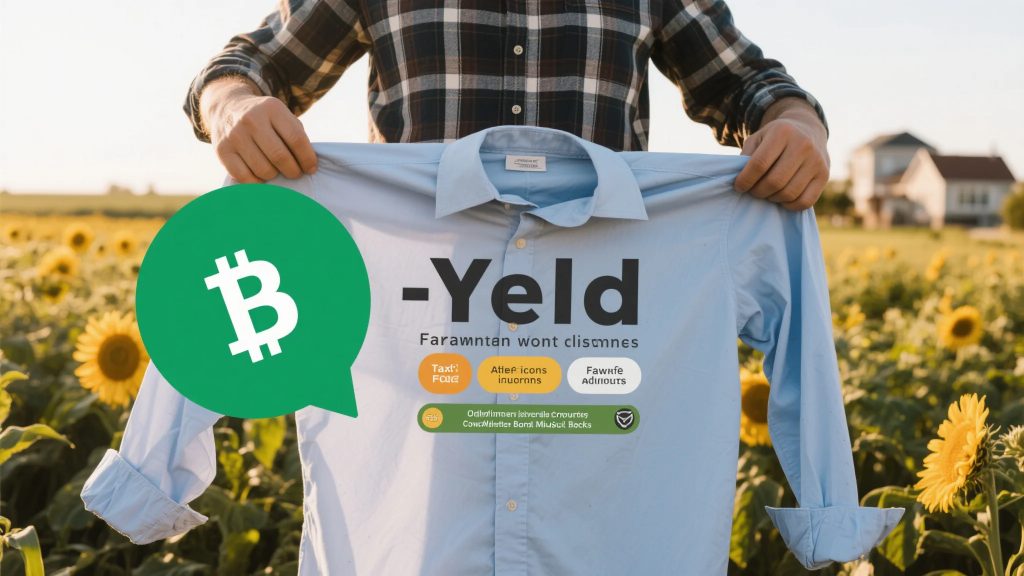
Getting Started with Yield Farming Without Losing Your Shirt
Understanding Yield Farming Crypto Fundamentals
The world of decentralized finance has introduced innovative concepts like yield farming crypto that allow investors to earn passive income from their digital assets. At its core, yield farming involves lending cryptocurrency through smart contract protocols in exchange for interest payments and potential token rewards. While the returns can be attractive, newcomers must understand the complex risks before diving in.
What makes yield farming crypto particularly challenging is the rapidly evolving landscape of protocols, tokens, and strategies. Successful farmers stay updated on platform security audits, tokenomics, and impermanent loss risks. The most prudent approach involves starting small, diversifying across reputable platforms, and never investing more than you can afford to lose in this volatile space.
Tax-Free Income Funds as a Stable Alternative
For investors seeking more predictable returns, tax-free income funds offer municipal bond exposure without the volatility of crypto markets. These funds invest in government-issued securities that generate income exempt from federal taxes, and often state taxes too for local residents. The tax advantages make them especially valuable for high-income investors in top tax brackets.
The stability of tax-free income funds comes from their investment in essential service projects like schools, hospitals, and infrastructure. While yields may be lower than crypto farming, the capital preservation and reliable income streams appeal to conservative investors. Many financial advisors recommend allocating a portion of fixed income holdings to these tax-efficient vehicles.
Exploring Alternative Yield Assets for Diversification
Beyond traditional bonds and stocks, a growing universe of alternative yield assets provides opportunities for income-focused investors. These include private credit, royalty financing, specialty finance, and other non-correlated strategies. What they share is the potential to generate yields above conventional markets while offering different risk profiles.
The key to successful alternative yield assets investing lies in thorough due diligence and proper allocation sizing. Many alternatives involve limited liquidity, complex structures, or unique risks that require careful consideration. Building a diversified basket of alternative yield sources can help smooth overall portfolio returns while enhancing income potential.

Real Estate Crowdfunding for Tangible Asset Income
Investors looking to combine yield with hard asset backing are turning to real estate crowdfunding platforms. These marketplaces allow individuals to pool funds for property investments that were previously inaccessible without large capital commitments. The income comes from rental cash flows and potential appreciation upon property sales.
The appeal of real estate crowdfunding lies in its ability to provide professional property management with passive investor participation. Different platforms specialize in various property types – from multifamily apartments to commercial developments – allowing investors to target specific sectors. As with any real estate investment, understanding local market dynamics is crucial for success.
Municipal Bonds: The Foundation of Tax-Efficient Income
While exploring innovative yield strategies, investors shouldn’t overlook the time-tested benefits of municipal bonds. These debt instruments issued by state and local governments offer federal tax-exempt income, with potential state tax benefits for in-state residents. Their low default rates and essential service backing provide stability during market turbulence.
The predictable cash flows from municipal bonds make them ideal for laddering strategies that match income needs with bond maturities. Investors can choose between general obligation bonds backed by taxing authority or revenue bonds tied to specific projects. This flexibility allows customization of credit risk and yield preferences within the muni market.
Balancing High-Reward and Low-Risk Yield Strategies
Constructing a portfolio that includes both yield farming crypto and more stable options like municipal bonds requires careful risk management. The aggressive portion might represent a small percentage of overall assets, while core holdings focus on preservation and reliable income. This barbell approach allows participation in high-growth opportunities while maintaining portfolio stability.
Regular rebalancing ensures that successful high-yield strategies don’t become oversized risk exposures. Many advisors recommend treating crypto yield farming as speculative “play money” rather than core savings. The stable portion of the portfolio, anchored by tax-free income funds and quality bonds, provides the foundation for long-term financial security.
Implementing a Multi-Layered Yield Strategy
Sophisticated income investors often layer multiple yield sources, combining alternative yield assets with traditional fixed income and growth investments. This might involve core municipal bond holdings, satellite positions in real estate crowdfunding, and small allocations to experimental strategies like crypto farming. The exact mix depends on individual risk tolerance and income requirements.
What matters most is understanding how each component contributes to overall portfolio objectives. Real estate crowdfunding provides inflation-resistant tangible assets, while tax-free income funds offer stability and tax efficiency. Crypto farming, while risky, can provide non-correlated returns that enhance overall portfolio performance when sized appropriately.


